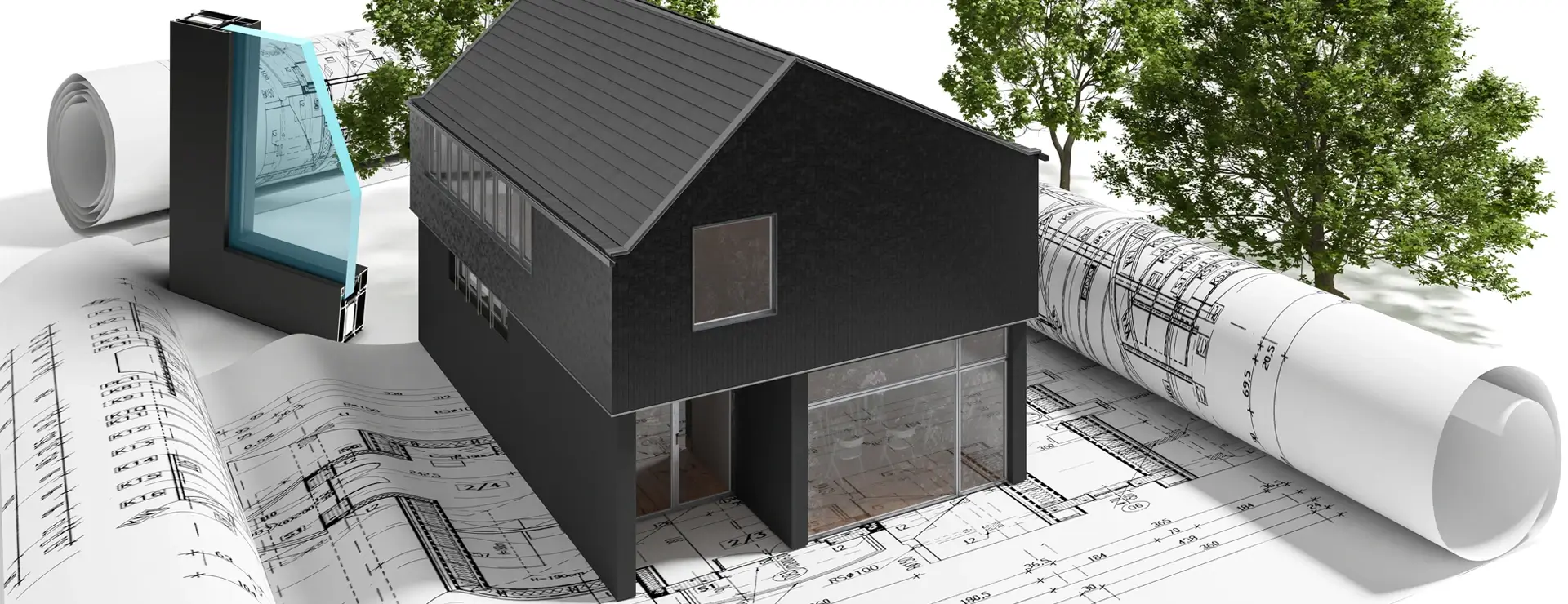

A passive house is a building designed to use minimal energy for heating and cooling spaces. In practice, this translates into very low energy demand and significantly lower building maintenance costs. The key considerations when building a passive house are airtightness and the use of natural heat sources, such as solar energy. Passive buildings are characterized by thick layers of insulation, appropriate building orientation, and high-quality aluminum passive windows to ensure optimum thermal insulation.
Passive windows differ from standard windows primarily in their level of thermal insulation. Minimizing heat loss is crucial in passive houses, and this requires the use of products with much better insulation performance.
Aluprof passive aluminum windows meet the stringent requirements set for passive buildings. They differ from standard joinery, most importantly in the following aspects:
heat transfer coefficient (Uw)
Passive house windows have a very low Uw coefficient to reduce heat loss and provide better thermal insulation. For passive windows, the Uw coefficient must be less than or equal to 0.8 W/m2K.
frame structure
Passive windows use advanced materials and structures designed to minimize heat loss. Aluminum frames can be further reinforced with insulation.
acoustic insulation
Passive windows offer not only excellent thermal insulation, but also a high level of noise protection, something that is essential in areas exposed to high levels of ambient sounds.
These properties make passive windows an indispensable component of passive houses, helping to maximize energy savings.
When choosing windows for a passive house, be sure to consider several important aspects to make them efficient and durable. Besides the aforementioned properties, such as the heat transfer coefficient (Uw) and extra frame insulation, the following factors also play an important role:
Multilayer glazing
Passive windows are usually fitted with triple-sealed units to reduce heat loss and improve acoustic insulation.
Seals
There is no room for leaks in passive houses. Windows should have high-quality seals to prevent heat loss and provide excellent insulation.
When you decide to purchase passive aluminum windows, choose a reputable manufacturer offering products with proven quality and innovative technological solutions. Aluprof’s top experts have done their best to ensure that the performance of our windows far exceeds the minimum requirements for passive window joinery.
Our portfolio includes aluminum MB-104 Passive windows, which are perfect for passive buildings. They provide excellent thermal insulation parameters and meet stringent energy-saving requirements. The solutions they feature ensure exceptional thermal comfort all year round while reducing energy consumption and heating costs.
With a very low heat transfer coefficient (from 0.53 W/m2K), MB-104 passive windows guarantee high thermal efficiency and additional insulation to support thermal and acoustic protection.
This is not the end of their benefits! Resistant to external factors, MB-104 Passive windows retain their properties for years, even in adverse weather conditions. They stand out for their high resistance to wind loads (class C5/B5, according to PN-EN 12210:2001). The wind load class is determined by evaluating the level of deformation of window elements under loads from the wind.
Aside from high-quality passive windows, zero-emission houses can also feature other energy-saving solutions, such as high-insulation doors, façades with adequate thermal insulation and exterior roller shutters to help keep optimal temperatures inside a building. The right combination of these solutions with passive windows will ensure maximum energy efficiency while minimizing heat loss.
If you are planning to build a passive house or retrofit an existing building, think about choosing Aluprof passive windows. This is a project that will bring benefits for years to come, both in terms of savings and care for the planet.
Modern construction is increasingly guided by the principles of sustainable development. Investors, architects, and developers are turning to solutions that not only improve user comfort but also minimise the environmental impact of buildings. In this context, international green...
With global climate change, reducing the carbon footprint is becoming one of the most pressing challenges for the construction industry. From material production to use and recycling, every stage of a building’s life cycle has an impact on the environment. This is why we need sol...
Sustainable design is a topic that is being discussed more and more often, with a focus on energy saving and environmental awareness. Nevertheless, investors remain skeptical because of the numerous myths surrounding sustainable construction. Let’s explode the five most common mi...